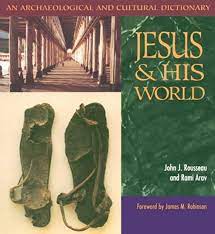Articles/Essays – Volume 28, No. 4
Understandable Archeology | John Rousseau and Rami Arav, Jesus and His World: An Archeological and Cultural Dictionary
When one travels to Israel, it soon becomes clear that most of the traditional sites for events in the New Testament represent locations selected by religious sentimentality, not scientific archeology. Too many publications of holy sites also perpetuate what amounts to historical rumor. To be frank, many—perhaps most—specific locations where Jesus actually walked, was born, lived, and died cannot be reliably determined. For example, the Garden Tomb was identified a century ago by a British general.
This situation makes the publication of Jesus and His World a remark able and exceedingly useful tool both for those casually interested in the New Testament as well as for scholars. It combines the best available archeology with up-to-date assessments by competent biblical scholars. The book has the virtue of being on the forefront of current research and yet is written in the language of non-specialists. It contains entries regarding the discovery of a first-century fishing boat in the Sea of Galilee, coins, the Temple, archeological discoveries in the cities and villages of Galilee where Jesus worked, the discovery of Caiaphas’ tomb, modes of baptism and ritual bathing, clothing, discussions of the letters from the leader of the Jewish revolt, etc. It’s like hearing the voices of ghosts. It is difficult to put this book down. I highly recommend it to every serious student of the New Testament. Each section contains a discussion of the implications of the material findings of archeology to research on the historical Jesus.
This work is written by the codirectors of the archeological excavation at Bethsaida in Galilee. John Rousseau is at the University of California at Berkeley; Rami Arav is from the University of Haifa. Dr. Rousseau is the director of the recently opened museum at Bethsaida.
Jesus and His World: An Archeological and Cultural Dictionary. By John Rous seau and Rami Arav (Philadelphia: Fortress Press, 1995).


 Back to full Issue
Back to full Issue

